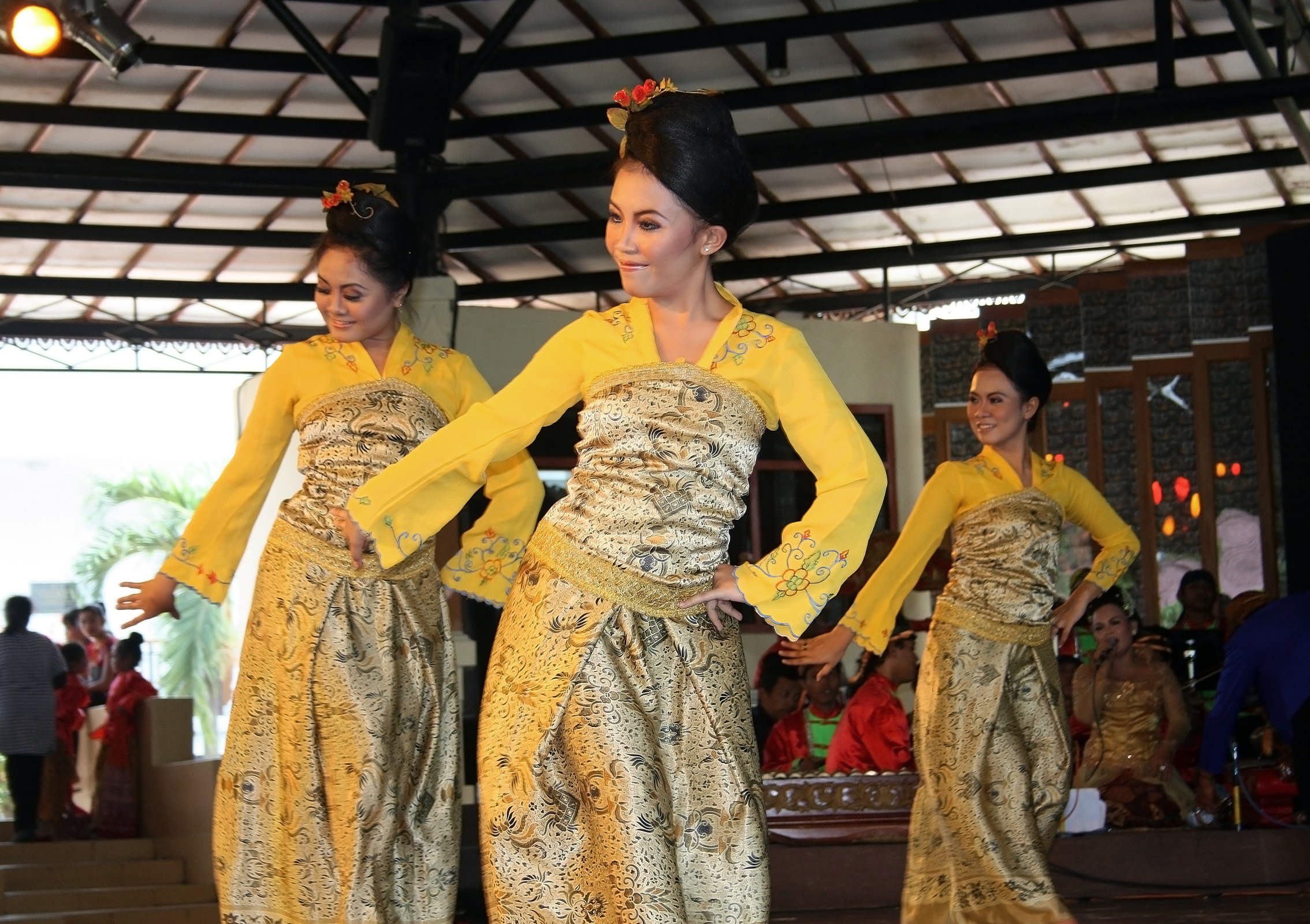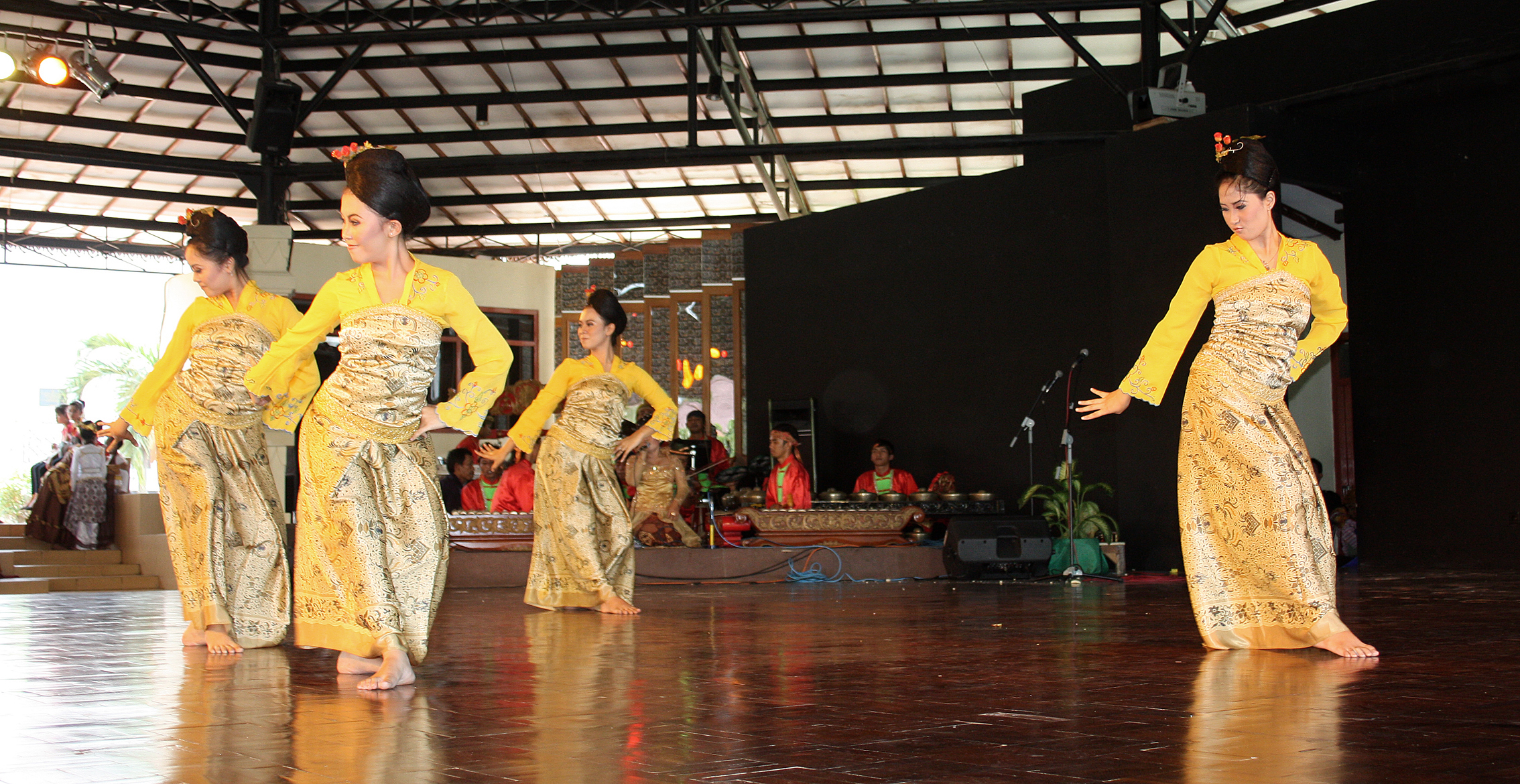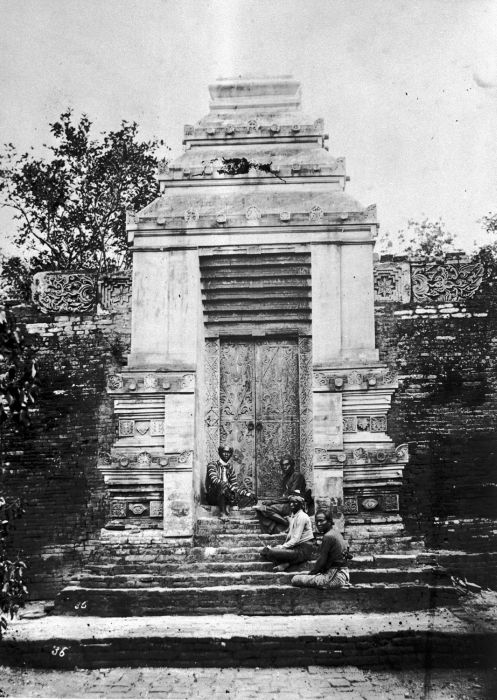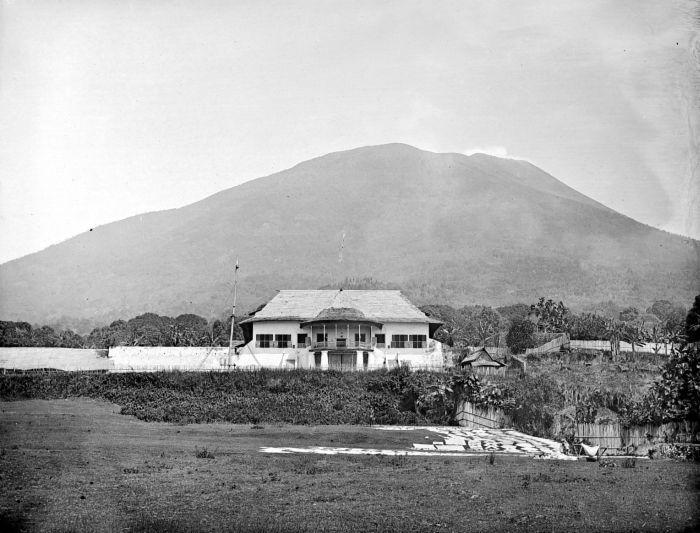|
Sundanese Dance
Sundanese dances ( id, Tarian Sunda; su, ᮒᮛᮤ ᮞᮥᮔ᮪ᮓ) is a dance tradition that is a part of ritual, artistic expression as well as entertainment and social conduct among the Sundanese people of West Java and Banten, Indonesia. Sundanese dance is usually cheerful, dynamic and expressive, with flowing movements in-sync with the beat of kendang accompanied with Gamelan degung music ensemble. In Sundanese culture the term ''ngibing'' means "to dance", but it is indeed performed in particular Sundanese style, usually performed between male and female couple. In West Java, all it takes is a woman's voice and a drum beat to make a man get up and dance. Every men there breach ordinary standards of decorum and succumb to the rhythm at village ceremonies or weddings. The music the men dance to varies from traditional gong degung ensembles to the contemporary pop known as dangdut, but they consistently dance with great enthusiasm. Henry Spiller in "Erotic Triangles" draws on d ... [...More Info...] [...Related Items...] OR: [Wikipedia] [Google] [Baidu] |
Jaipongan Bunga Tanjung 02
Jaipongan (), also known as Jaipong, is a popular traditional dance of Sundanese people from Indonesia. The dance was created by Gugum Gumbira, based on traditional Sundanese Ketuk Tilu music and pencak silat movements. Background In 1961, Indonesian President Sukarno prohibited rock and roll and other western genres of music, and challenged Indonesian musicians to revive the indigenous arts. The name jaipongan came from people mimicking of the sounds created by some of the drums in the ensemble. Audiences were often heard shouting jaipong after specific sections of rhythmic music were played. Jaipongan debuted in 1974 when Gugum Gumbira and his degung and dancers first performed in public. The most widely available album of Jaipongan outside of Indonesia is ''Tonggeret'' by singer Idjah Hadidjah and Gugum Gumbira's Jugala orchestra, released in 1987, and re-released as ''West Java: Sundanese Jaipong and other Popular Music'' by Nonesuch/Elektra Records. Gugum Gumbira Gugu ... [...More Info...] [...Related Items...] OR: [Wikipedia] [Google] [Baidu] |
Angklung
The (Sundanese: ) is a musical instrument from the Sundanese people in Indonesia made of a varying number of bamboo tubes attached to a bamboo frame. The tubes are carved to have a resonant pitch when struck and are tuned to octaves, similar to Western handbells. The base of the frame is held in one hand, while the other hand shakes the instrument, causing a repeating note to sound. Each performer in an ensemble is typically responsible for just one pitch, sounding their individual at the appropriate times to produce complete melodies (see Kotekan). The is popular throughout the world, but it originated in what is now West Java and Banten provinces in Indonesia, and has been played by the Sundanese for many centuries. The and its music have become an important part of the cultural identity of Sundanese communities. Playing the as an orchestra requires cooperation and coordination, and is believed to promote the values of teamwork, mutual respect and social harmony. On Nov ... [...More Info...] [...Related Items...] OR: [Wikipedia] [Google] [Baidu] |
Javanese Culture
Javanese culture is the culture of the Javanese people. Javanese culture is centered in the provinces of Central Java, Yogyakarta and East Java in Indonesia. Due to various migrations, it can also be found in other parts of the world, such as Suriname (where 15% of the population are of Javanese descent), the broader Indonesian archipelago region, Cape Malay, Malaysia, Singapore, Netherlands and other countries. The migrants bring with them various aspects of Javanese cultures such as music, traditional dances and art of shadow play. The migration of Javanese people westward has created the coastal Javanese culture that is distinct from inland Sundanese culture in West Java and Banten. Being the largest ethnic group, the Javanese culture and people influence Indonesian politics and culture, a process sometimes described as Javanisation. Literature Javanese literature tradition is among the earliest and the oldest surviving literature traditions in Indonesia. The transla ... [...More Info...] [...Related Items...] OR: [Wikipedia] [Google] [Baidu] |
Mataram Sultanate
The Sultanate of Mataram () was the last major independent Javanese kingdom on the island of Java before it was colonised by the Dutch. It was the dominant political force radiating from the interior of Central Java from the late 16th century until the beginning of the 18th century. Mataram reached its peak of power during the reign of Sultan Agung Anyokrokusumo (), and began to decline after his death in 1645. By the mid-18th century, Mataram lost both power and territory to the Dutch East India Company (Dutch: ''Vereenigde Oost-Indische Compagnie''; ''VOC''). It had become a vassal state of the company by 1749. Etymology The name ''Mataram'' itself was never the official name of any polity, as the Javanese often refer to their realm simply as ''Bhumi Jawa'' or ''Tanah Jawi'' ("Land of Java"). ''Mataram'' refers to the historical areas of plains south of Mount Merapi around present-day Muntilan, Sleman, Yogyakarta, and Prambanan. More precisely, it refers to the Kota Gede ... [...More Info...] [...Related Items...] OR: [Wikipedia] [Google] [Baidu] |
Kacapi Suling
Kacapi suling is a form of Sundanese music from Indonesia. It is essentially ''tembang Sunda'' minus vocals, and also at interludes between songs at a typical Tembang Sunda performance. The higher pitched kacapi rincik, the lower pitched kacapi indung and the suling flute are the instruments used for kacapi suling. Kacapi suling has instrumental pieces performed in two different scales; the first four in laras pelog convey a light mood, the last four, in laras sorog are more slow and grave. The change to laras sorog usually takes place at midnight and lasts until sunrise. Many hotels in Indonesia, especially in Bali, and other parts of the world like in Shenzhen China play this Sundanese music genre in their lobbies. Malaysia itself invited Sundanese Kacapi Suling experts from the Province of West Java to teach their expertise in Malaysia. See also *Tembang Sunda *Kacapi *Suling The suling or seruling ( Sundanese: ) is a musical instrument of the Sundanese people in ... [...More Info...] [...Related Items...] OR: [Wikipedia] [Google] [Baidu] |
Ciamis
Ciamis ( su, ᮎᮤᮃᮙᮤᮞ᮪) is a town and district which serves as the regency seat of Ciamis Regency in West Java, Indonesia. Government GOVERNMENT Since regional autonomy was implemented in 2001, Ciamis Regency has experienced regional expansion into Ciamis Regency with 30 districts and Banjar City 4 districts. Along with the increase in population in Ciamis Regency and to reduce the span of government control in 2006, Ciamis Regency experienced the expansion of 6 districts, so rising from 30 districts to 36 districts. Likewise for the number of villages, during the period 2007 – 2009, the number of villages increased by 3 villages. Likewise, for the same period, the number of Neighborhood Associations (RW) and Neighborhood Units (RT) experienced an increase of 27 Rukun Warga (RW) and 92 Rukun Tetangga (RT). The number of civil servants in Ciamis increased from 18,404 people in 2008 to 18,966 people in 2009. Based on the composition of employees by gender, during 2007 - ... [...More Info...] [...Related Items...] OR: [Wikipedia] [Google] [Baidu] |
Sumedang
Sumedang (former spelling: Soemedang) is a town in Western Java, Indonesia, approximately 46 km northeast of Bandung. It is the capital of Sumedang Regency. The town is just south of the volcanic Mount Tampomas, which is 1,684 m (5,525 ft) high and is usually climbed from Cimalaka District, 7 km from Sumedang. Sumedang's museum, Prabu Geusan Ulun, houses a collection of traditional Sundanese weaponry, as well as some crown jewels and other finery. It is on Geusan Ulun Road. The town is famous for '' Sumedang tofu'', a local variety of deep fried tofu which was first made by a Chinese immigrant, Ong Kino. In the district surrounding the town lies Cadas Pangeran, a section of the trans-Java postal road constructed on the order of Dutch governor named Willem Daendels during the first quarter of the 19th century. The section is famous due to difficulty during the construction, which required blasting of a mountainside. Hence "cadas" which means mountain rock ... [...More Info...] [...Related Items...] OR: [Wikipedia] [Google] [Baidu] |
Bandung
Bandung ( su, ᮘᮔ᮪ᮓᮥᮀ, Bandung, ; ) is the capital city of the Indonesian province of West Java. It has a population of 2,452,943 within its city limits according to the official estimates as at mid 2021, making it the fourth most populous city in Indonesia. Greater Bandung (Bandung Basin Metropolitan Area/BBMA) is the country's third-largest metropolitan area, with nearly nine million inhabitants. Located above sea level, the highest point in the North area with an altitude of 1,050 meters and the lowest in the South is 675 meters above sea level, approximately southeast of Jakarta, Bandung has cooler year-round temperatures than most other Indonesian cities. The city lies on a river basin surrounded by volcanic mountains that provides a natural defence system, which was the primary reason for the Dutch East Indies government's plan to move the capital from Batavia (modern-day Jakarta) to Bandung. The Dutch first established tea plantations around the mou ... [...More Info...] [...Related Items...] OR: [Wikipedia] [Google] [Baidu] |
Cianjur
Cianjur ( su, ᮎᮤᮃᮔ᮪ᮏᮥᮁ) is a town and district in the West Java province of Indonesia, and is the seat of Cianjur Regency. The district of Cianjur is located along one of the main roads between Jakarta (120 km to the northwest) and Bandung (60 km to the east). The population was 158,125 at the 2010 Census and 173,265 at the 2020 Census; the official estimate as at mid 2021 was 174,587.Badan Pusat Statistik, Jakarta, 2022. Because of its location, some of Cianjur's residents commute to work either in Bandung or in Jakarta. The road on which Cianjur is located used to be the main (extremely busy) road from Jakarta to Bandung but was in effect replaced as the main road link between these two main cities when the Jakarta-Bandung tollroad was fully completed in 2005. However, due to its low traffic, Cianjur returned as one of the alternative routes for travellers from Jakarta and Bandung. History Cianjur was founded in 1677, with the first head of the town ... [...More Info...] [...Related Items...] OR: [Wikipedia] [Google] [Baidu] |
Pakuan Pajajaran
Pakuan Pajajaran (or ᮕᮊᮥᮝᮔ᮪ᮕᮏᮏᮛᮔ᮪/ Dayeuh Pakuan/Pakwan or Pajajaran) was the fortified capital city of Sunda Kingdom. The location is roughly corresponds to modern Bogor city in West Java, Indonesia, approximately around the site of Batu Tulis. The site is revered as the spiritual home of Sundanese people as it contains much of shared identity and history of Sundanese people. The city was settled since at least the 10th century, but not gaining major political importance until Sri Baduga Maharaja established it as the royal capital of Sunda kingdom in the 15th century. In 1513, the city was visited by its first European visitor, Tomé Pires, the Portuguese envoy. According to his report, the city of ''Daio'' (''Dayeuh'' is a Sundanese term for "capital city") was great city, with population around 50,000 inhabitants. After the reign of King Jayadewata (Sri Baduga Maharaja), Pakuan Pajajaran served as the royal capital for several generations. ''Dayeuh'' P ... [...More Info...] [...Related Items...] OR: [Wikipedia] [Google] [Baidu] |
Sunda Kingdom
The Sunda Kingdom ( su, , Karajaan Sunda, ) was a Sundanese Hindu kingdom located in the western portion of the island of Java from 669 to around 1579, covering the area of present-day Banten, Jakarta, West Java, and the western part of Central Java. The capital of the Sunda Kingdom moved several times during its history, shifting between the Galuh (Kawali) area in the east and Pakuan Pajajaran in the west. The Sunda Kingdom reached its peak during the reign of King Sri Baduga Maharaja, whose reign from 1482 to 1521 is traditionally remembered as an age of peace and prosperity among Sundanese people. According to primary historical records such as the Bujangga Manik manuscript, the eastern border of the kingdom was the Pamali River (Ci Pamali, the present-day Brebes River) and the Serayu River (Ci Sarayu) in Central Java. Most accounts of the Sunda Kingdom come from primary historical records from the 16th century. The kingdom's inhabitants were primarily the eponymous ethni ... [...More Info...] [...Related Items...] OR: [Wikipedia] [Google] [Baidu] |
Keraton
Kraton or keraton ( jv, ꦏꦿꦠꦺꦴꦤ꧀ or ꦏꦼꦫꦠꦺꦴꦤ꧀) is a type of royal palace in Java, Indonesia. Its name is derived from the Javanese ''ka-ratu-an'', meaning residence of the ''ratu'', the traditional honorific title for a monarch. In Java, the palace of a prince is called ''pura'' or ''dalem'', while the general word for palace is ''istana'', identical to Malay. Specific palaces Kraton that function as the residence of a royal family include: ;Yogyakarta (Jogja) region: *Kraton Ngayogyakarta Hadiningrat (Palace of Sultan Hamengkubuwono). * Pura Pakualaman (Palace of Adipati Pakualam). ;Surakarta (Solo) region: * Kraton Surakarta Hadiningrat (Palace of Susuhunan Pakubuwono). *Pura Mangkunegaran (Palace of Adipati Mangkunegara). ;Cirebon area: *Kraton Kasepuhan (Palace of Sultan Sepuh). *Kraton Kanoman (Palace of Sultan Anom). *Kraton Kacirebonan (Palace of Sultan Cirebon). *Kraton Kaprabonan ( id) (Palace of Sultan Prabon). Historical palaces The l ... [...More Info...] [...Related Items...] OR: [Wikipedia] [Google] [Baidu] |










